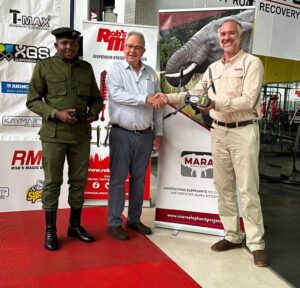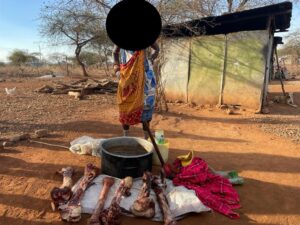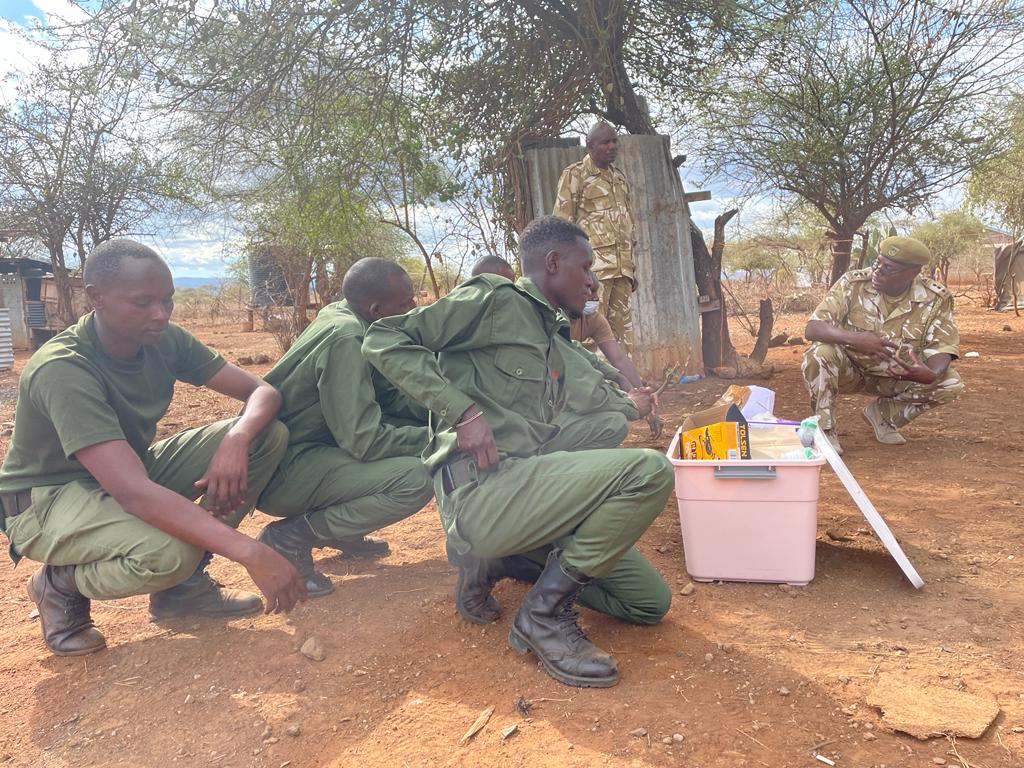 Mara Elephant Project ended the year by hitting a long-awaited milestone, the regular deployment of drones in the field by trained staff members to mitigate conflict, monitor elephants and conduct reconnaissance.
Mara Elephant Project ended the year by hitting a long-awaited milestone, the regular deployment of drones in the field by trained staff members to mitigate conflict, monitor elephants and conduct reconnaissance.
 In November, we increased our aerial capacity after receiving three Mavic 3T drones with thermal capabilities generously donated by Elephant Cooperation and Romagecko Kenya Limited popularly known as ‘Rob’s Magic’. These drones significantly enhanced our capabilities and efficiency in monitoring and mitigating conflict, especially at night. The drones have been extremely effective when partnered with training, which we’ve partnered with Expert Drones Africa to offer to our staff like Wilson Sairowua who is now leading our drone project. He participated in an assessment in November by the Kenya Civil Aviation Authority in Nairobi, which laid the groundwork for obtaining his night instructor rating in December. The below video highlights our rangers using a drone to push collared elephant Matali away from a settlement.
In November, we increased our aerial capacity after receiving three Mavic 3T drones with thermal capabilities generously donated by Elephant Cooperation and Romagecko Kenya Limited popularly known as ‘Rob’s Magic’. These drones significantly enhanced our capabilities and efficiency in monitoring and mitigating conflict, especially at night. The drones have been extremely effective when partnered with training, which we’ve partnered with Expert Drones Africa to offer to our staff like Wilson Sairowua who is now leading our drone project. He participated in an assessment in November by the Kenya Civil Aviation Authority in Nairobi, which laid the groundwork for obtaining his night instructor rating in December. The below video highlights our rangers using a drone to push collared elephant Matali away from a settlement.
You can also see from December MEP rangers deploying drones to monitor elephants to check for injuries.
 The MEP helicopter remains a vital tool for the organization especially when assisting our partners. On November 15, I assisted Kenya Wildlife Service (KWS) Vet Dr. Njoroge from the Sheldrick Wildlife Trust (SWT) Mobile Vet Unit in the air with two elephant treatments. The first, a female with a spear wound and the second a female with a snare wrapped around her leg. Both treatments were successful.
The MEP helicopter remains a vital tool for the organization especially when assisting our partners. On November 15, I assisted Kenya Wildlife Service (KWS) Vet Dr. Njoroge from the Sheldrick Wildlife Trust (SWT) Mobile Vet Unit in the air with two elephant treatments. The first, a female with a spear wound and the second a female with a snare wrapped around her leg. Both treatments were successful.
We replaced the collars on three of the Wildlife Research and Training Institute, KWS and MEP tracked elephants in the fourth quarter. During Ritan’s collaring operation, I offered aerial support with the MEP helicopter and moved him into an open area where he joined our partners on the ground to deploy the new collar. During the last week of November, both Clara and Audrey received new tracking collars to allow for their continued 24/7 monitoring. Clara and Audrey can oftentimes be found in each other’s company sometimes combining family herds with another collared elephant Indy. Their continued monitoring allows us to rapidly respond to conflict and better understand the connectivity between the Rift Valley, Loita Plains and the Mara through an area where infrastructure is expanding. MEP partnered with KWS Vet Dr. Njoroge for both operations and the MEP helicopter was an essential tool. Clara was in thick bush with her herd of 20 and needed to be moved out to a clearing for the operation and Audrey was on a plateau near a high conflict area with a herd of 60 elephants. Both were also fitted with the latest solar powered elephant collar in hopes of extending the battery life. MEP and our partners aim to gain a more detailed understanding of how changing land use patterns are impacting elephants to better protect them and the communities that share a home.
 The Mara Elephant Project “Lima” ranger team based in Mosiro was deployed at the end of July and they’ve already made an impact by responding to conflict, monitoring elephants for injury, meeting with the community and in the third quarter they had a big bushmeat bust. They received a report from the community about a potential bushmeat poaching incident involving a giraffe. After following up on the tip, the MEP rangers laid in wait to ambush the suspect and arrested him in possession of 50 kg of bushmeat, which was indeed from a giraffe. They also attended an advanced training course organized by KWS and the South Rift Association of Land Owners (SORALO). The training covered the basics on human rights, making arrests, law enforcement, and crime scene management. MEP is committed to providing opportunities for rangers to advance their knowledge base and skill set and we’re grateful to our partners for providing this training.
The Mara Elephant Project “Lima” ranger team based in Mosiro was deployed at the end of July and they’ve already made an impact by responding to conflict, monitoring elephants for injury, meeting with the community and in the third quarter they had a big bushmeat bust. They received a report from the community about a potential bushmeat poaching incident involving a giraffe. After following up on the tip, the MEP rangers laid in wait to ambush the suspect and arrested him in possession of 50 kg of bushmeat, which was indeed from a giraffe. They also attended an advanced training course organized by KWS and the South Rift Association of Land Owners (SORALO). The training covered the basics on human rights, making arrests, law enforcement, and crime scene management. MEP is committed to providing opportunities for rangers to advance their knowledge base and skill set and we’re grateful to our partners for providing this training.
Finally, I was humbled by the level of support for Mara Elephant Project during the fourth quarter. Thank you to everyone who donated and championed our efforts.



